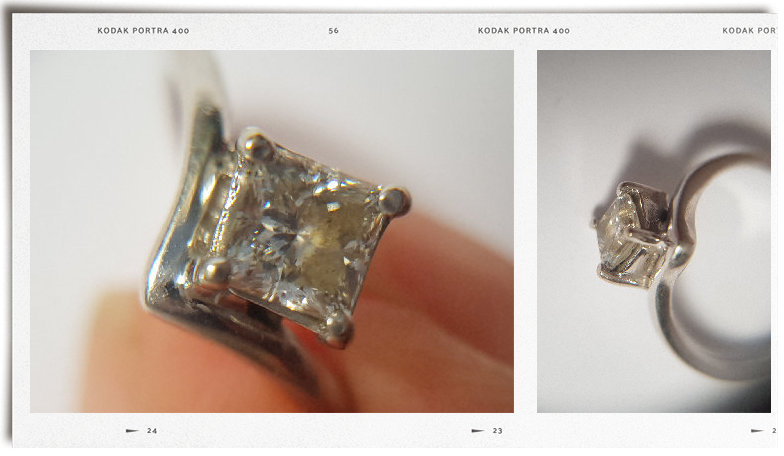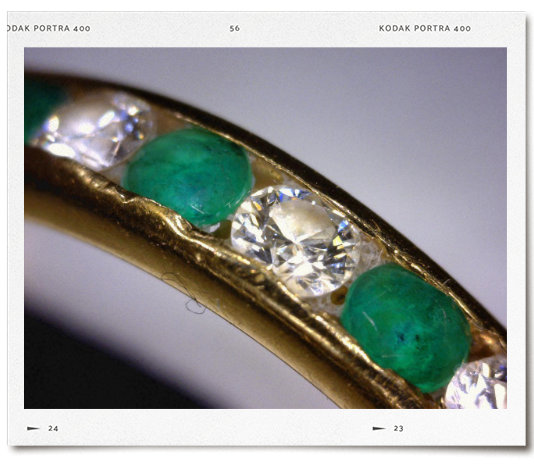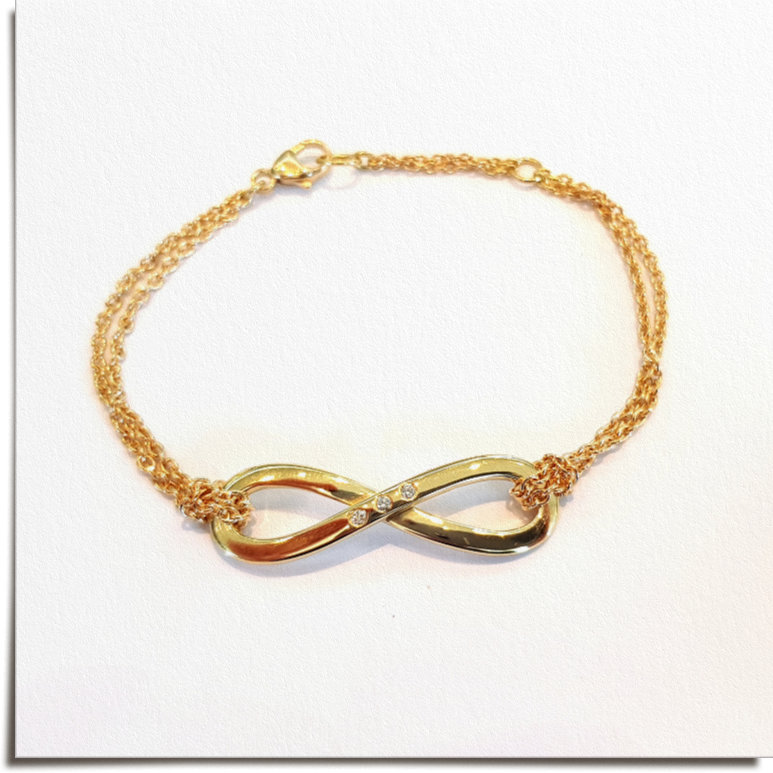Upcycling old jewellery was not in the original game plan..
When I started Heirloom London back in 2014, I must admit, jewellery remodelling was not on my radar.. I was very focused on democratising jewellery for individual wearers, and I thought this was mainly going to be engagement rings (true), wedding and eternity rings (also true) and miscellaneous gifts (less true). It was a friend of mine who first approached me and said "I've been left an old ring from my grandmother, and I'd really like to make it into an engagement ring - is this the kind of thing you could do?"
I said yes, because when your business is small and young, you don't turn things down. It was a lot of fun and we made a lovely ring for her.

Fast forward 6 years, and remodelling has become a big part of what we do. There isn't much that I haven't done, Heirloom is specialist at remodelling engagement rings, and we don't stop there, creating pendants, bracelets and earrings along the way. Part of the reason that we can do so much, is that the people to carry out the work are all experts who understand old jewellery, as well as new. This is crucial, both to ensure we can protect old pieces, and also because we want to protect ourselves. There is no point taking responsibility for an item of jewellery that is going to fall apart as soon as somebody looks at it! And that meant that I had to learn fast from my guys to ensure that all expectations were managed.
It is always a learning process, even when you think you've seen it all. Here's a snapshot of what we know.
What is Jewellery Remodelling?
In simple terms, jewellery remodelling is exactly that - taking a piece of jewellery and altering the design to suit the wearer's tastes. This could be by;
- Taking the gemstones from an existing jewellery item, and transferring them into a made to order piece.
- Making a new jewellery design and incorporating existing elements (like gemstones, or fittings) into this.
- Reforming metal from the existing jewellery design, and combining with the gemstones into new jewellery piece(s).
- Keeping the design of the current piece, but changing how it is set, or shaped.
Basically any project that physically adjusts the look of an existing piece of jewellery can be considered jewellery remodelling.
If you are considering remodelling - we've pulled together a pdf you can download - either click on the right (for PC and tablet) or at the end of this article which is aimed to help you decide of it is the right course of action for your jewellery.
What can I expect if I want to remodel my jewellery?
The answer to the above question lies beyond it's predecessor - what do you expect the outcome to be? Is the job simple or complex? What you have in mind will impact design, labour, time and ultimately budget.
Note that previous paragraph doesn't mention materials. The biggest mistake at the beginning of a remodelling project is when the assumption is that your old diamond and gold is going to take 75% off the cost to make the new piece. Yes, when you have a larger diamond or gemstone, expect more of a saving on the overall piece price. But, the piece still has to be made. It is basically a bespoke jewellery commission if you have a specific design in mind that isn't available made to order. I've written an article about reusing metal in jewellery which is worth a look.
What a Goldsmith Looks At When Remodelling Jewellery
(Or, how well do you know your jewellery?)
Old jewellery has so many charms, but you can't get away from the fact it is; well.. old.. That is often beyond immediate visual appearance, goldsmiths wear magnifying glasses for most of their time at the bench for a reason! They have to understand the structure of a jewellery item before any work commences, as things can change rapidly as soon as work commences.
When we start a remodelling project, the first person who gets to scrutinise the jewellery is me. Best case is when the client has pointed out the immediate issues - that means no surprises. Worst case.. well, this blog story was definitely up there.
Once with the goldsmith, it's like looking under the car bonnet. They have been working with old jewellery for a very long time (at least three decades) so they know what the problems might be, and where they are. Things we've found include;
- White sapphires instead of diamonds - especially in old pieces, it was not uncommon when a diamond was lost, for a small white sapphire to replace it. This was a more cost effective solution. Whether or not the jeweller declared it, is always another matter. When buying vintage jewellery that is diamond set, it's worth asking them to check if some of the stones appear 'sleepy'.
- Cracked settings/claws and bent or twisted settings/claws. Not always easy to spot, especially without magnification. It can be glaring, or, it can be a ticking time-bomb.. It is why you should always have your fine jewellery checked every 2-3 years.
- Metal wear over stones or not enough metal. It's very common with rubover and channel settings, and is not just old pieces, I've had a ring from a highly respected brand that had very little metal on top of the setting, and the stones kept dropping out. Again, it's one that is often easiest to spot under magnification.
- Open backed stone settings. Comes down to the experience of the goldsmith, it can look lovely on the back of a jewellery design when the stones are just dropped in and sit together neatly. Not so good when the setting moves and the stone falls through. There should be some security there to ensure that the edges aren't going to.
- Settings flooded with solder. This is just when the piece was repaired by somebody who doesn't understand jewellery. Some of the old pieces I see that have had this done..it's heartbreaking. It's a bit like stuffing a void with chewing gum. There may be no alternative, but 4/5 times there is..
- Platinum jewellery repaired with white gold. Another one to get me annoyed.. Platinum melts at a fair higher temperature than gold. This means that the repair is always going to be brittle, and in addition, because white gold doesn't exist in nature, it will be a different colour. Often it was carried out for cost reasons in the UK (when platinum was way higher in price than gold) and in the USA (although a lot of retailers in the USA tried to say that white gold was superior to platinum - a sure sign they didn't know how to work in platinum as that is not true).
- Hairline fractures, are often when a piece of jewellery has been incorrectly cast. Porosity is another issue, under magnification there are tiny holes. These are no different to structural issues in concrete, they can cause future issues and cause the piece to break. Most common around stone settings.
- Low finesse or base metals is another point of contention, especially if the jewellery has been bought overseas. 14Kt gold jewellery is popular in the USA - it is 57.5% pure gold - but it does upset people who were expecting 18kt which is 75% pure gold.. It may also be that just because the jewellery has '18k' stamped inside it, it may only be 16kt - not all countries are as careful with their metal finesse levels..! Base metals are something that goldsmiths won't touch. It is impossible to work out what is in them, and they will respond differently to gas torches etc. A piece of base metal can ruin a goldsmith's bench..


It's not an exhaustive list, and each job may have a new issue! Because jewellery is so varied, addressing the above isn't an off the shelf approach. Especially in the case of old jewellery, it may have been repaired several times already over the decades. But it's not always old jewellery, depending on your lifestyle and activities, a brand new ring can suffer.
What this will determine is whether, depending on the client objectives, we can work on the piece as per cost estimate, or whether we can work on the piece, but they are going to have to spend more money for the additional repairs/restoration. The reality may be, jewellery has survived through good luck and not having been interfered with.
So, sometimes at this point I've got to break it to the client - that the job we hoped was going to be simple has just got a whole load more complicated. Depending on the jewellery item, we may at this point recommend that remodelling it is not a very financially sound route. Or we may recommend that we keep the elements (i.e. the stones) and make a new setting.

Remember, the crux of the cost of a jewellery remodelling project is time and labour.
Going back to the question - What can I expect? - I'd recommend keeping an open mind on the outcome. Time and labour is going to drive the project cost. It is always possible to remodel jewellery, but sometimes it doesn't make a good argument if costs* are spiralling.
What you Can expect from a jewellery remodelling project;
- To be able to clearly understand the current condition of your jewellery
- To know what work is going to be required to remodel it to your specification, timings and cost estimate
- To receive your remodelled jewellery in new condition (unless concessions have been made to meet your budget objectives).
- To be able to wear your new jewellery on a daily basis (again here - unless you have been advised otherwise at the beginning of the project - which is usually dictated by budget)
- To be delighted that the finished piece looks even better than the design concepts.
Don't be put off having your jewellery remodelled!

Most client jobs, we are expecting the above issues, and will have already discussed them with you and how we are going to address them because everything can be addressed. Jewellery remodelling is complex and fascinating and deeply rewarding. It's every bit as fun as brand new bespoke designs, because there is always a piece of history involved which is interesting and exciting for the client. It's just good to approach any project like a house renovation, there may be surprises!
You can learn more about our jewellery remodelling service here. We also remodel rings for arthritic fingers and larger knuckles.
Finally, have a look at some of our remodelling Case Studies here.
*I imagine that for some readers of this article - the thought is "why should labour cost so much?" Actually, there are places who will carry jewellery work out cheaply. And it might be fine.. I don't see the 'fine' stuff - we are normally called on when problems have arisen. It is no different to cheap builders vs master builders or having your Audi repaired by an unknown garage. So the pragmatic approach would be to pay for the expertise in the first instance rather than lose more time and money in the future.